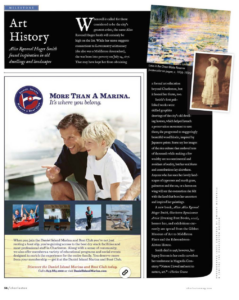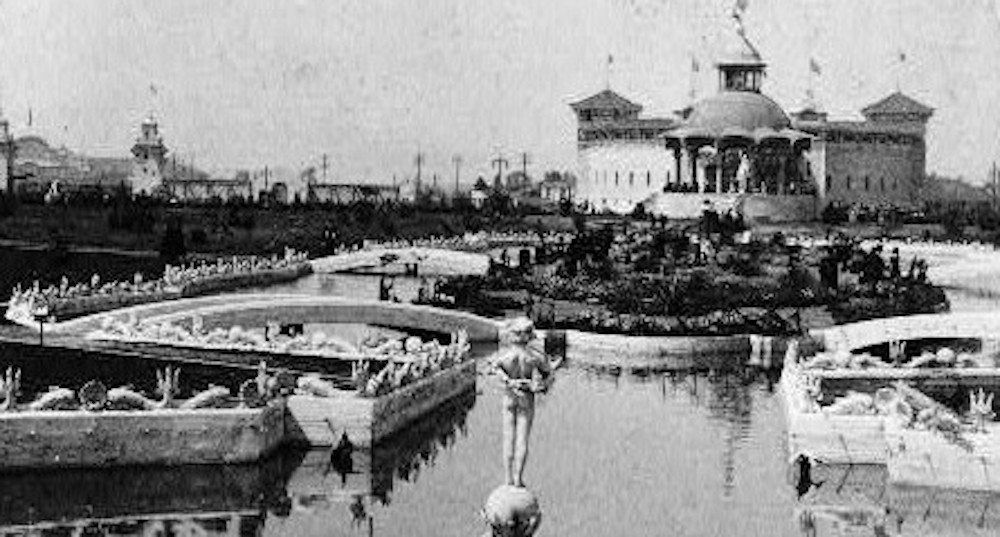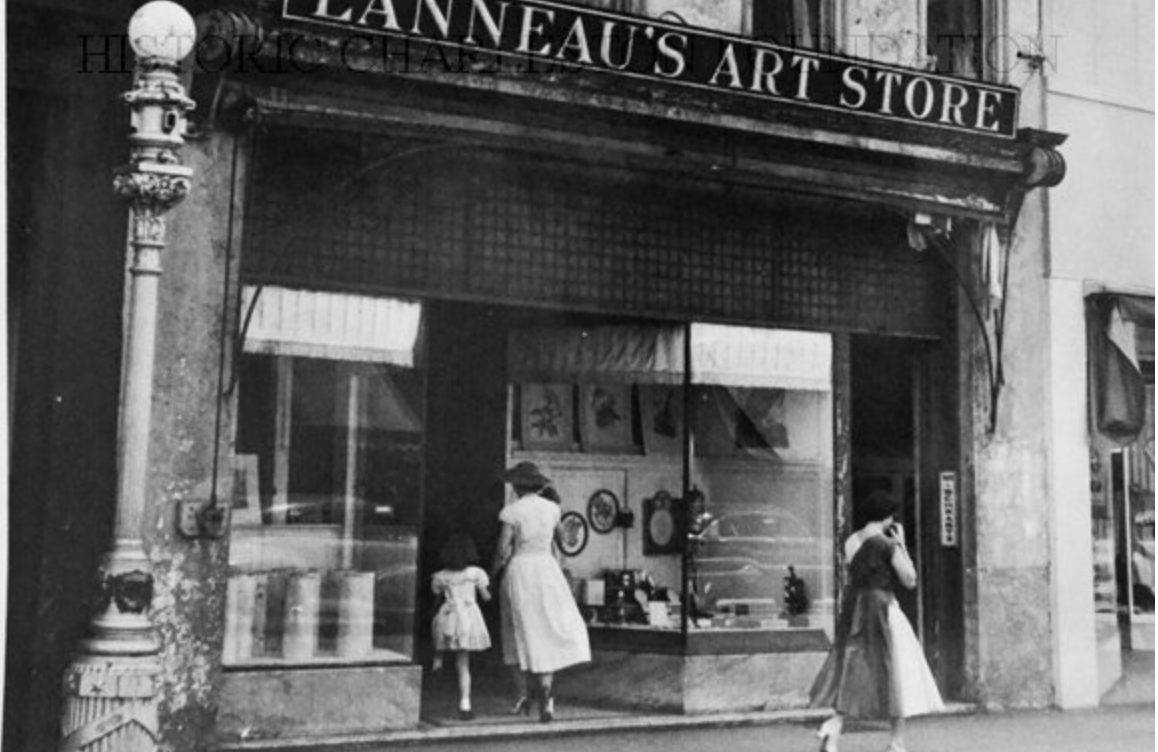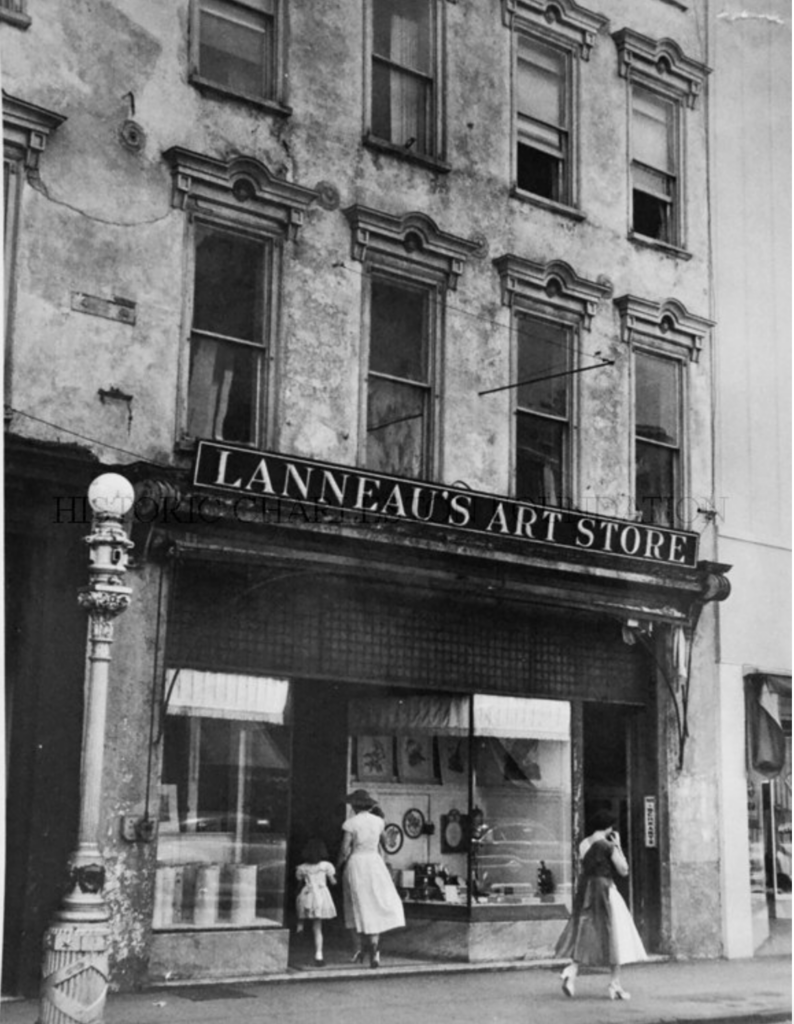Occasionally we’ll bring you exclusive glimpses of Alice and her life that didn’t make it into the final volume. This entry from co-author Dwight McInvaill.
By Dwight McInvaill
While Alice, as a young woman, had access in Charleston to art stores, to relatives’ collections of artwork, and to basic artistic training, she lacked first-hand exposure to major works of art. That changed in 1902 with the coming there of a six-month world’s fair to which she had a season’s pass.
This South Carolina Inter-State and West Indian Exposition featured the Palace of Arts. Designed by Bradford Gilbert, it was itself an impressive three-story work of art with its ivory-colored, exterior, classical façade. Its frontage featured eight, tall, slender, foundation-to-roof-line Ionic columns; three grand triangularly-arched Georgian front doors surmounted each by a round window; a balustraded peaked roof accented at each facing end by large pointed pediments; and four large sculptural groupings of military prowess on projected bases of its corners. These latter martial elements on the east and west sides of the building had previously been displayed on the Dewey Arch in New York City, and they represented War, Peace, the Army, and the Navy.[i]
The interior of this solid-brick, fire-proof structure stretched for 7,000 square feet and rose to a height of 30 feet. It was divided into three interior rooms with a general classification as follows: “Group 1: Paintings in oil and other recognized mediums and miniatures executed by American artists during the so-called ‘Colonial and Revolutionary Periods’ and the fifty years thereafter, or say, 1730–1840. Group 2: Paintings in oil, watercolor, pastel and other recognized mediums, executed by artists of the United States within the period from 1875–1901. Group 3: Sculpture, including medals and cameos by American artists.” Proclaimed by the fair’s boosters as being “the finest display of American art ever made in this country,” it was collected “by Mr. James Bliss Townsend of New York City, Art Director of the Exposition.”[ii]
Duncan Gay, the son of the landscape painter Edward Gay, and a designer in his own right, provided “artistic assistance in hanging and arrangement of the galleries,” and a reviewer noted that “one of the first impressions the observer gets is the harmonious result of the very great care taken by the hanging committee.” Since the assemblage encompassed 584 works, the presentation of this collection “on the interior walls finished in gray stucco” was done in a Salon-Style installation with paintings displayed not only side by side but also above and below each other to maximize the utilization of space in a floor-to-ceiling manner considered sophisticated by Gilded Age standards.As noted in the official guide to the exposition, “A very large skylight, 24 feet wide, [extended]…the entire length of the building giving ample light to display the art treasures.” Fabric canopies might have filtered bright sunlight, and reflectors on hanging electric lights could have highlighted certain works.[iii]
References and Resources
[i] Bruce G. Harvey, World’s Fairs in a Southern Accent: Atlanta, Nashville, and Charleston, 1895–1902 (Knoxville, TN: The University of Tennessee Press, 2014), 105. Owen Wister, “The Charleston Exposition,” 59–60. Official Guide, the South Carolina Inter-state and West Indian Exposition, 49.
[ii] Exhibition of Fine Arts, The South Carolina Inter-State and West Indian Exposition, Charleston, South Carolina, 1901–1902, Catalogue (Charleston, SC: Lucas-Richardson Co., [1902] – South Carolina Historical Society, Alice Ravenel Huger Smith Papers, File 21/54/25), 4.
[iii] Edward Gay and Gay Family Papers, 1852–1975: (http://www.aaa.si.edu/collections/edward-gay-and-gay-family-papers-6597). “Exhibition of Fine Arts” in The South Carolina Inter-State and West Indian Exposition,South Carolina Historical Society, Alice Ravenel Huger Smith Papers, File 21/54/25, 2 & 32. Beatrice Witte Ravenel, “Pictures at the Exposition,” News and Courier, May 7, 1902, np, South Carolina Historical Society File #21-71-01, Eola Willis Papers, Scrapbook. Harvey, World’s Fairs in a Southern Accent: Atlanta, Nashville, and Charleston, 1895–1902,105. Official Guide, the South Carolina Inter-State and West Indian Exposition, 49. Janet Whitmore, “Presentation Strategies in the American Gilded Age: One Case Study,”in Nineteenth-Century Art Worldwide, 2013–14: www.19thc-artworldwide.org.
[1] Bruce G. Harvey, World’s Fairs in a Southern Accent: Atlanta, Nashville, and Charleston, 1895–1902 (Knoxville, TN: The University of Tennessee Press, 2014), 105. Owen Wister, “The Charleston Exposition,” 59–60. Official Guide, the South Carolina Inter-state and West Indian Exposition, 49.
[1] Exhibition of Fine Arts, The South Carolina Inter-State and West Indian Exposition, Charleston, South Carolina, 1901–1902, Catalogue (Charleston, SC: Lucas-Richardson Co., [1902] – South Carolina Historical Society, Alice Ravenel Huger Smith Papers, File 21/54/25), 4.
[1] Edward Gay and Gay Family Papers, 1852–1975: (http://www.aaa.si.edu/collections/edward-gay-and-gay-family-papers-6597). “Exhibition of Fine Arts” in The South Carolina Inter-State and West Indian Exposition, South Carolina Historical Society, Alice Ravenel Huger Smith Papers, File 21/54/25, 2 & 32. Beatrice Witte Ravenel, “Pictures at the Exposition,” News and Courier, May 7, 1902, np, South Carolina Historical Society File #21-71-01, Eola Willis Papers, Scrapbook. Harvey, World’s Fairs in a Southern Accent: Atlanta, Nashville, and Charleston, 1895–1902,105. Official Guide, the South Carolina Inter-State and West Indian Exposition, 49. Janet Whitmore, “Presentation Strategies in the American Gilded Age: One Case Study,”in Nineteenth-Century Art Worldwide, 2013–14: www.19thc-artworldwide.org.




